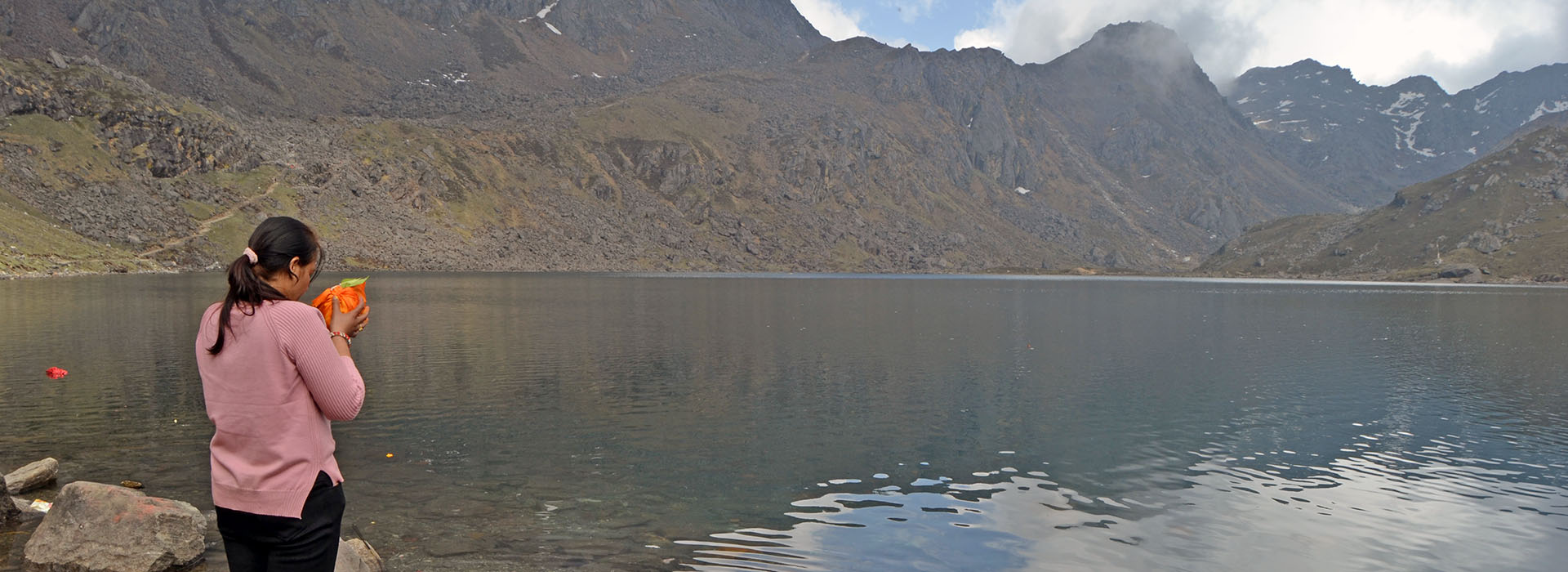Janai Purnima
Janai Purnima is one of the major festivals in Nepal. The Nepali people celebrate the festival in different forms throughout the country. The festival falls on the full moon day of the Shrawan month according to the Hindu Lunar Calendar. The Hindus, especially of the Shaiva sect, celebrate the full moon day in the Nepali month of Shrawan (which normally falls in August). The valley people – Newar community popularly call it ‘Gunhi Punhi’. The festival is also famous as ‘Kwanti Purnima’.
Celebration of Janai Purnima
Janai – Yagyopabita
As a tradition, the men from Tagadhari communities go fasting on the day before Janai Purnima. They shave their heads and have a single vegetarian meal during the day. The Tagadharis are those who wear the sacred thread around their bodies from the left shoulder down to the right shoulder. Next, on the day of Janai Purnima, early in the morning, people visit the nearby temples. The men from Nepali Tagadhari communities change the sacred thread on the occasion of ‘Janai Purnima’. Religiously, Janai, the Yogyopabita has a high significance. It is essential while performing any type of cultural and religious activity. The Janai thread is called Yogyopabita because it purifies oneself to attend sacred functions like Yagya and Hawan.
Janai is a sacred thread in Hindu Culture. ‘Rishi Tarpani’ is another name for Janai Purnima. According to the time-honored tradition, the people receive the ‘Rakshya Bandhan’ thread, which is tied around the wrist as an amulet. The yellow thread is purified through the chanting of mantras by Brahmin priests as a symbol of protection from fear and disease.
Kwanti
Additionally, people in and around the Kathmandu Valley celebrate the festival as Kwanti Purnima. We mix several different beans and soak them in water for a day. The mix contains at least 9 different types of beans. The water is drained and let sprout for at least 3-4 nights. Every household cooks such beans with tiny sprouts by adding different species to make a delicious soup called Kwanten. According to the ‘Kulabarna Tantra’ which is a Tantrik scripture, the soup is highly nutritious and keeps diseases away. Nowadays, soup is also used as a special delicacy on the Nepali menu.
Visiting the Shiva Place
The sacred ponds in the mountain ranges are the main places to visit on Janai Purnima. Gosainkunda Lake is one of the most popular places to celebrate Janai Purnima. Devotees pick a festival to visit during the 5 Days Short Gosaikunda Trek. A large number of people from all over the world come here to celebrate Janai Purnima. Many cultural photographers consider it to be the greatest time for shooting. On this day, people from all across the country flock to Gosaikunda Lake. They make the long trek from their home to Gosaikunda to commemorate the occasion. On the day of Janai Purnima, people worship Lord Shiva. According to legend, Lord Shiva rests in Gosaikunda after consuming the poison ‘Kalakut’. There is a belief that Lord Shiva rests at Gosaikunda after consuming the venom ‘Kalakut’ extracted from Samundra Manthan.
Similarly, the other places of Lord Shiva also equally receive thousands of visitors on the day. The Panch Pokhari Bhairab Kunda, Dudh Kunda, and Badi Malika of western Nepal are the major pilgrimage of the day. Tens of thousands of people visit the religious sites of Kathmandu. The Shiva’s places are the special attraction of the occasion. The Kumbheshwor and Pashupatinath temples Budanilkantha are the major places receiving the maximum number of visitors on the day of Janai Purnima.
Janai Purnima as Rakshya Bandhan
The lower plains of Nepal celebrate the Janaipurnima festival as Rakhi. It is a festival to strengthen the brother and sisterhood among the siblings. The sisters tie an attractive ‘Rakhi’ around the wrists of their brothers wishing them good health, safety, long life, and prosperity. The brothers do the same for their sister. The festival is getting its popularity in other parts of the nation.
Today, thousands of devotees worship Lord Shiva at Pashupatinath in Kathmandu and Kumbheswor in Lalitpur and take holy dips in ponds and lakes located in the high hills of the country. Several ponds like Gosainkunda, Dudhkunda, and Bhairabkunda receive thousands of pilgrimages on the occasion.


One thought on “Janai Purnima”